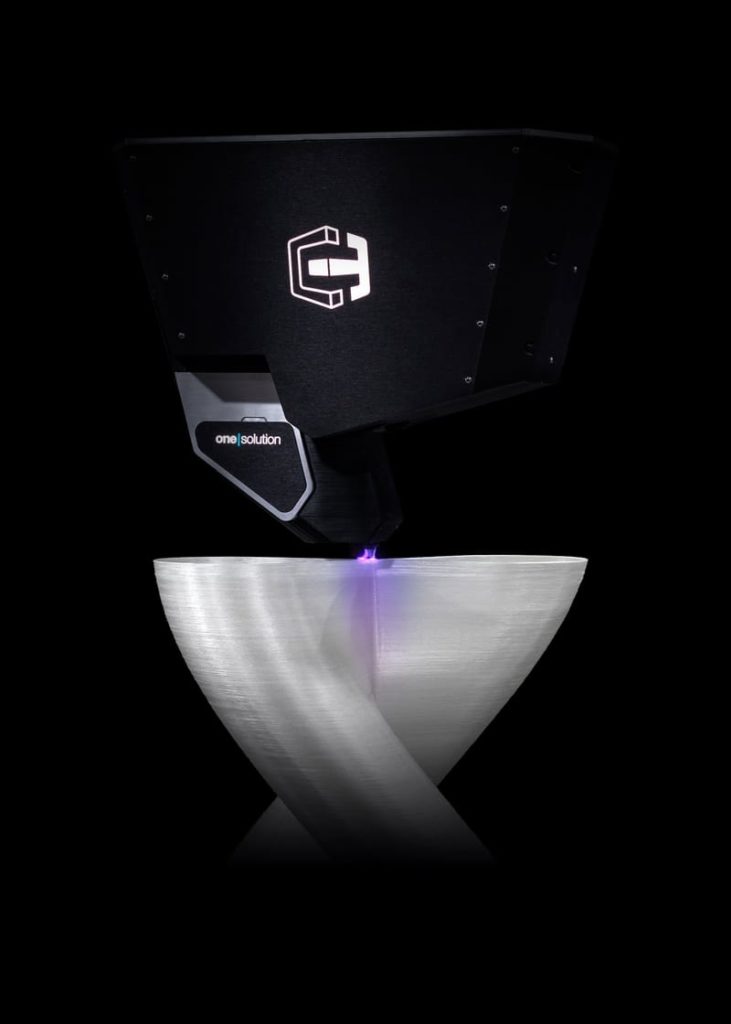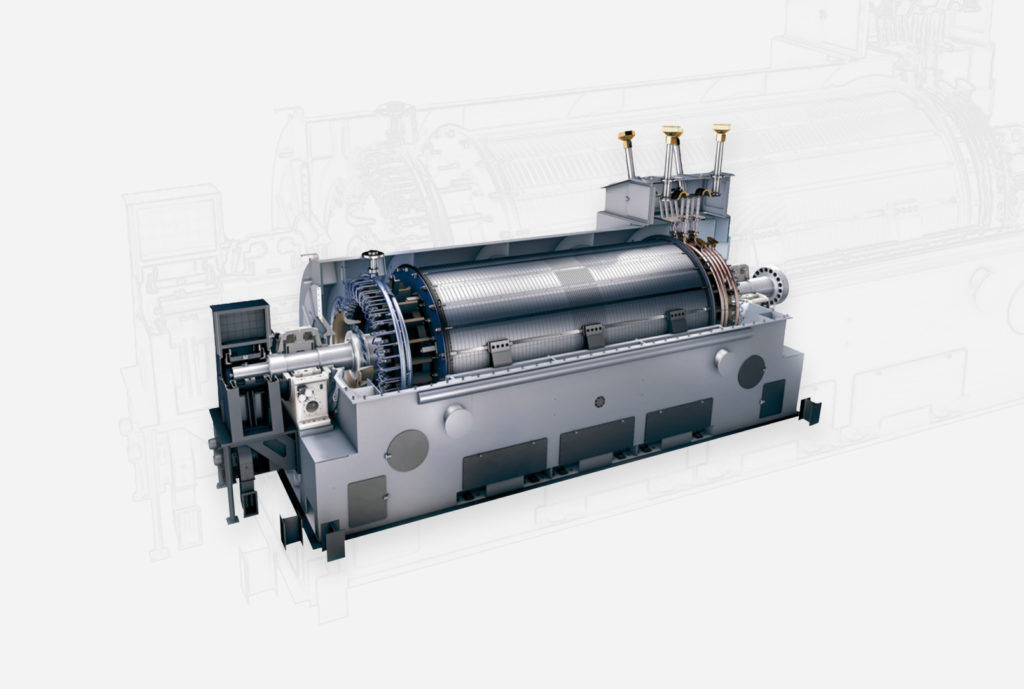Among the startups aiming to disrupt 3D printing and composites manufacturing is Continuous Composites, based out of Idaho. The company’s Continuous Fiber 3D Printing (CF3D) technology offers a number of benefits, not the least of which is the ability to 3D print and orient continuous fiber reinforcement materials along optimal pathways. Continuous Composites demonstrated the possibilities of this technique through the production of generator parts for Siemens Energy (FRA: ENR).
Working for multiple years alongside the tech giant, as well as, material company Arkema (OTCMKTS: ARKAY), Continuous Composites was able to develop a Glass Fiber Reinforced Polymer (GFRP). With a glass transition temperature (Tg) of 227°C, the high temperature thermoset polymer is capable of producing large, complex parts impossible with conventional composite fabrication methods. The material demonstrated Fiber Volume Fractions (FVF) of over 50% with a void content of less than 1.5%.
 The CF3D process 3D printing GFRP. Image courtesy of Continuous Composites.
The CF3D process 3D printing GFRP. Image courtesy of Continuous Composites.The partners leveraged the material and CF3D process to 3D print several generator parts that typically would be made using metal casting, a process that can be expensive and require substantial lead times. The GFRP, however, demonstrated the temperature requirements for Siemens Energy generators and other applications. According to the companies, 3D printing GFRP parts with the CF3D process could result in five times fewer manufacturing costs, as well as a reduction of lead times from eight to 10 months down to three weeks. The partners project $1 million in energy savings resulting from long-term downtime from energy equipment.
“The superior mechanical performance of CF3D®, combined with the significant cost and lead time reduction, led to our selection of Continuous Composites,” said Dr. Joel Alfano, Principal Technology Development Engineer at Siemens Energy. “The opportunity to replace a metallic generator component with composite materials leveraging AM is a powerful breakthrough for solving the constraints we face in the Energy industry, and CF3D® technology is making it possible.”
Most power generators convert the mechanical force of a rotating machine into electric power, with the motion between a magnetic field and a conductor creating electrical current. Though the majority of power stations use fossil fuels to drive the rotating mechanism, other energy sources, such as nuclear power and renewables are increasingly deployed to drive such generators as those in the Siemens-Continuous Composites project.
 An energy generator from Siemens Energy. Image courtesy of Siemens Energy.
An energy generator from Siemens Energy. Image courtesy of Siemens Energy.The extent to which Siemens will actually use the technology to produce metal replacement parts for energy production is unclear. So far, this seems to be a demonstrator case, with no public announcement related to actually deploying CF3D to 3D print generator components. But, because there is little public information about how CF3D is being used by customers, this seems to be a first glimpse into the applications of the technology.
It’s interesting how large-scale power generator parts might compare to 3D printed bike frames, the demonstrator developed by Continuous Composites competitor Arevo. Given In-Q-Tel’s interest in Arevo, we know that they’re not only 3D printing bike frames. Perhaps both are secretly 3D printing large, metal replacement parts for the energy sector or the military. After all, Continuous Composites has 3D printed demonstrator items for the U.S. Air Force and Lockheed Martin.
Subscribe to Our Email Newsletter
Stay up-to-date on all the latest news from the 3D printing industry and receive information and offers from third party vendors.
You May Also Like
Profiling a Construction 3D Printing Pioneer: US Army Corps of Engineers’ Megan Kreiger
The world of construction 3D printing is still so new that the true experts can probably be counted on two hands. Among them is Megan Kreiger, Portfolio Manager of Additive...
US Army Corps of Engineers Taps Lincoln Electric & Eaton for Largest 3D Printed US Civil Works Part
The Soo Locks sit on the US-Canadian border, enabling maritime travel between Lake Superior and Lake Huron, from which ships can reach the rest of the Great Lakes. Crafts carrying...
Construction 3D Printing CEO Reflects on Being Female in Construction
Natalie Wadley, CEO of ChangeMaker3D, could hear the words of her daughter sitting next to her resounding in her head. “Mum, MUM, you’ve won!” Wadley had just won the prestigious...
1Print to Commercialize 3D Printed Coastal Resilience Solutions
1Print, a company that specializes in deploying additive construction (AC) for infrastructure projects, has entered an agreement with the University of Miami (UM) to accelerate commercialization of the SEAHIVE shoreline...






























